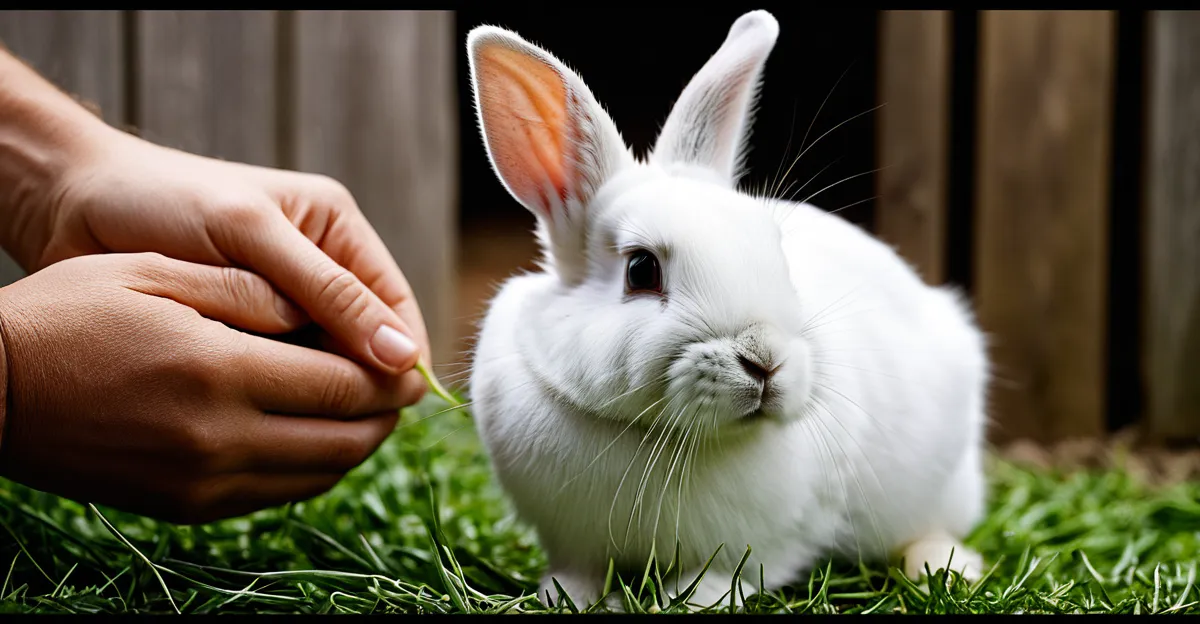Essential preparation before introducing a new rabbit
Introducing a new rabbit requires careful rabbit bonding preparation to ensure a smooth and stress-free experience. First, assessing compatibility is crucial. Observe each rabbit’s personality and behavior to anticipate how they might interact. Health checks are mandatory to prevent transmission of illnesses; both rabbits should be vetted by a veterinarian and confirmed healthy.
Gather all necessary supplies beforehand, including separate food bowls, litter trays, and bedding for each rabbit. This prevents resource guarding and helps maintain a calm environment, which is vital for safe rabbit introduction. Prepare cleaning materials to tidy any accidents promptly and reduce stress.
Topic to read : How Can Owning Uncommon Pets Benefit Your Well-Being?
Creating a neutral territory is fundamental for their initial meetings. Choose a space unfamiliar to both rabbits, free from any scents or objects tied to their individual territories. This setting reduces territorial aggression and promotes positive interaction. Begin with short, supervised sessions, gradually increasing time together while closely monitoring their behavior.
Understanding rabbit behavior basics—like ear position, body posture, and grooming actions—helps you interpret their feelings and intervene effectively when necessary. Patience and observation during this phase lay the foundation for successful bonding and a harmonious multi-rabbit household.
This might interest you : What are the top considerations for adopting a pet ferret?
Step-by-step guide to gradual rabbit introductions
Creating a smooth path to bunny bonding
Introducing rabbits gradually is essential for a positive bonding process. Start with scent swapping, a technique where you exchange bedding or toys between the rabbits to familiarize them with each other’s scent without direct contact. This sensory introduction helps reduce stress and builds curiosity.
Next, arrange short, supervised interactions in a neutral space. Keep these sessions brief initially—about five minutes—and gradually increase the duration as the rabbits show calm behavior. Always watch for signs of tension like lunging or thumping.
Throughout this process, observing body language is critical. Signs of acceptance include relaxed posture and gentle grooming, while stress or aggression might appear as growling or chasing. If aggressive behaviors emerge, separate the rabbits and slow down the introduction pace.
Consistency and patience in the gradual rabbit introduction allow the bond to develop naturally. This step-by-step approach, using scent swapping, controlled meetings, and careful observation, lays a strong foundation for a harmonious relationship between your rabbits.
Monitoring rabbit interactions and handling challenges
Watching monitoring rabbit behavior carefully is crucial during the bonding process. Positive signs include gentle grooming, relaxed body language, and shared resting spots, all indicating growing trust. Conversely, aggression signs in rabbits such as lunging, biting, or persistent chasing signal the need for closer attention. Recognizing these cues early allows for intervention before injuries occur.
To manage aggression and keep rabbits safe, separate them temporarily if fights escalate. Use barriers like pet gates to give each rabbit space while still allowing visual contact, which promotes gradual familiarity. Never force interaction, as this heightens stress and risk of injury.
Knowing when and how to intervene safely is key. Approach calmly and avoid sudden movements. Distract aggressive rabbits with toys or treats rather than physically separating them, which can cause escalation. If injuries do happen, consult a vet promptly.
Throughout bonding, prioritize rabbit bonding safety by maintaining a calm environment, supervising all interactions, and being patient. This improves the chances of a successful introduction and a harmonious relationship. Investing time in monitoring rabbit behavior pays off by minimizing stress and fostering a lasting bond.
Tips for successful long-term bonding
Creating rabbit bonding success relies on carefully encouraging positive associations between your rabbits. Start by offering treats simultaneously but separately, so they associate each other with rewards. Gradually, increase supervised interactions in neutral territory, reinforcing positive interactions through gentle petting and calm voices to reduce tension.
Maintaining a consistent routine is essential to achieving long-term coexistence. Rabbits thrive with predictable feeding times, cleaning schedules, and quiet environments. Avoid sudden changes which can cause stress, a common bonding barrier. Keep their shared space comfortable, providing ample hiding spots to help reduce anxiety and allow natural behaviors.
Recognizing when your rabbits are ready to permanently share space is crucial. Signs of readiness include mutual grooming, relaxed body postures, and playing together without aggression. However, watch for subtle signals like avoidance or increased thumping, which indicate ongoing stress. Understanding these cues helps you time the introduction of shared habitats carefully, ensuring the rabbit bonding success remains stable.
By focusing on reinforcing positive interactions, maintaining routines, and observing readiness signs, you set the foundation for a harmonious and lasting rabbit companionship. This approach not only fosters trust but also enriches their environment, making their long-term coexistence rewarding for both pets and owners.
Resources, expert recommendations, and common FAQs
Navigating the complexities of rabbit bonding often calls for professional rabbit bonding advice. When your rabbits show persistent aggression or anxiety despite your efforts, it’s crucial to seek help from a rabbit-savvy veterinarian or an experienced behaviorist. These experts can identify underlying health or behavioral issues, offering tailored solutions to foster a peaceful relationship between your rabbits.
For those seeking further support, numerous reliable resources exist. Books and reputable websites dedicated to rabbit behavior provide detailed bonding techniques and troubleshooting tips. Connecting with online forums or local rabbit rescue groups enables sharing experiences with fellow rabbit owners, enriching your understanding through real-world examples.
Common rabbit bonding FAQs often involve questions such as: “How long does bonding typically take?” or “What are safe ways to introduce rabbits?” Typically, bonding duration varies widely, from a few days to several weeks, depending on personalities and environment. Safe introductions generally require neutral territory and supervised interactions to prevent territorial disputes.
Addressing these common concerns with clarity and expertise empowers owners to approach bonding confidently. Embracing expert guidance and reliable resources ensures your rabbits have the best chance for a harmonious bond.
